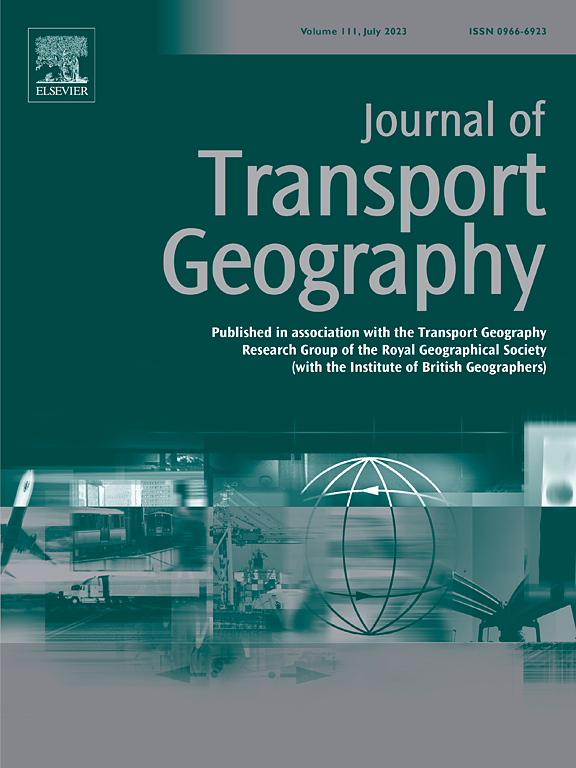Unpacking data representation issues in distributional accessibility impact assessments: Lessons from Bogotá's urban gondola
IF 5.7
2区 工程技术
Q1 ECONOMICS
引用次数: 0
Abstract
This paper contributes to the academic literature by comparing findings from various conceptualizations of accessibility used in planning practice alongside analyses informed by different moral principles found in transportation scholarship. The study focuses on the accessibility benefits of Bogotá's first urban gondola project, known locally as TransMiCable. It addresses two main questions: (1) How many people benefit from the access improvements enabled by TransMiCable? (2) How does TransMiCable enhance job access, and for whom? Findings from a local accessibility analysis indicate that the investment benefited approximately 80,000 residents within TransMiCable's 800-m catchment area. However, results from a regional accessibility impact analysis show that the benefits extend beyond the project's immediate area, reaching residents from various socioeconomic backgrounds, some living up to ten kilometers away —totaling more than one million beneficiaries.
Distributional accessibility impact analyses guided by Rawls's principles of distributive justice indicate that the most disadvantaged population groups received the greatest accessibility benefits from TransMiCable, rendering the project progressive, and therefore justifiable on ethical grounds. However, analyses guided by egalitarian and sufficientarian notions of justice present a less compelling case for supporting the project. The paper closes by discussing the potential implications for accessibility-oriented planning and recommendations to transportation data analysts and city planners.
分布式可达性影响评估中的数据表示问题:来自波哥大城市贡多拉的经验教训
本文通过比较规划实践中使用的各种可达性概念的发现,以及交通学术中发现的不同道德原则的分析,为学术文献做出了贡献。这项研究的重点是波哥大首个城市贡多拉项目的可达性效益,该项目在当地被称为TransMiCable。它解决了两个主要问题:(1)有多少人受益于TransMiCable带来的访问改进?(2) TransMiCable如何提高就业机会,为谁提供就业机会?当地可达性分析的结果表明,这项投资使TransMiCable 800米流域内的约8万居民受益。然而,区域可达性影响分析的结果表明,受益范围超出了项目的直接区域,惠及了来自不同社会经济背景的居民,有些居民居住在10公里以外的地方,总计有100多万受益者。在罗尔斯分配正义原则的指导下,分布可达性影响分析表明,最弱势的人口群体从TransMiCable获得了最大的可达性利益,这使得该项目具有进步性,因此在伦理基础上是合理的。然而,以平等主义和充分主义的正义概念为指导的分析提出了一个不那么令人信服的支持该项目的理由。论文最后讨论了以可达性为导向的规划的潜在影响,以及对交通数据分析师和城市规划者的建议。
本文章由计算机程序翻译,如有差异,请以英文原文为准。
求助全文
约1分钟内获得全文
求助全文
来源期刊

Journal of Transport Geography
Multiple-
CiteScore
11.50
自引率
11.50%
发文量
197
期刊介绍:
A major resurgence has occurred in transport geography in the wake of political and policy changes, huge transport infrastructure projects and responses to urban traffic congestion. The Journal of Transport Geography provides a central focus for developments in this rapidly expanding sub-discipline.
 求助内容:
求助内容: 应助结果提醒方式:
应助结果提醒方式:


